By Daoke
PolarDB for MySQL is a cloud-native database developed by the Alibaba Cloud ApsaraDB team since 2015, marking the beginning of a new era from managed databases to cloud-native databases.
Through continuous efforts of the R&D team, the technical architecture has evolved from the initial cloud-native storage-computing separation architecture to a three-layer architecture, and then to a new architecture of a cloud-native database in pluggable serverless mode combined with cloud technologies. The supported versions have expanded from PolarDB for MySQL 5.6 in 2017 to PolarDB for MySQL 8.0 in 2019, and finally to the full version of PolarDB for MySQL 5.7 in 2020. Numerous enterprise-level features have grown exponentially, including end-to-end performance optimization from the computing layer to the storage layer, HTAP capability for single-node and multi-node parallelism, integrated memory index analysis, global database for cross-regional data access and disaster recovery, hot backup technology, the future application of 3AZ technology for extreme disaster recovery experience, cost reduction and efficiency improvement for cold/warm/hot data management, DDL optimization including parallel and non-blocking DDL capability to ensure business sustainability, partition capability benchmarked against Oracle to handle traditional large table and table-splitting modes, complex query optimization capabilities to simplify execution, query result caching for accelerated data access, as well as monitoring tools for O&M and observability. The continuous improvement of the R&D and release processes, along with the integration between online and offline efforts, ensures enhanced stability and better support for high-speed iteration. The R&D team has grown from a small exploratory group to a robust and efficient collective of hundreds.
In the following sections, we will provide a detailed overview of the evolution of PolarDB for MySQL from its initial development to its current state.
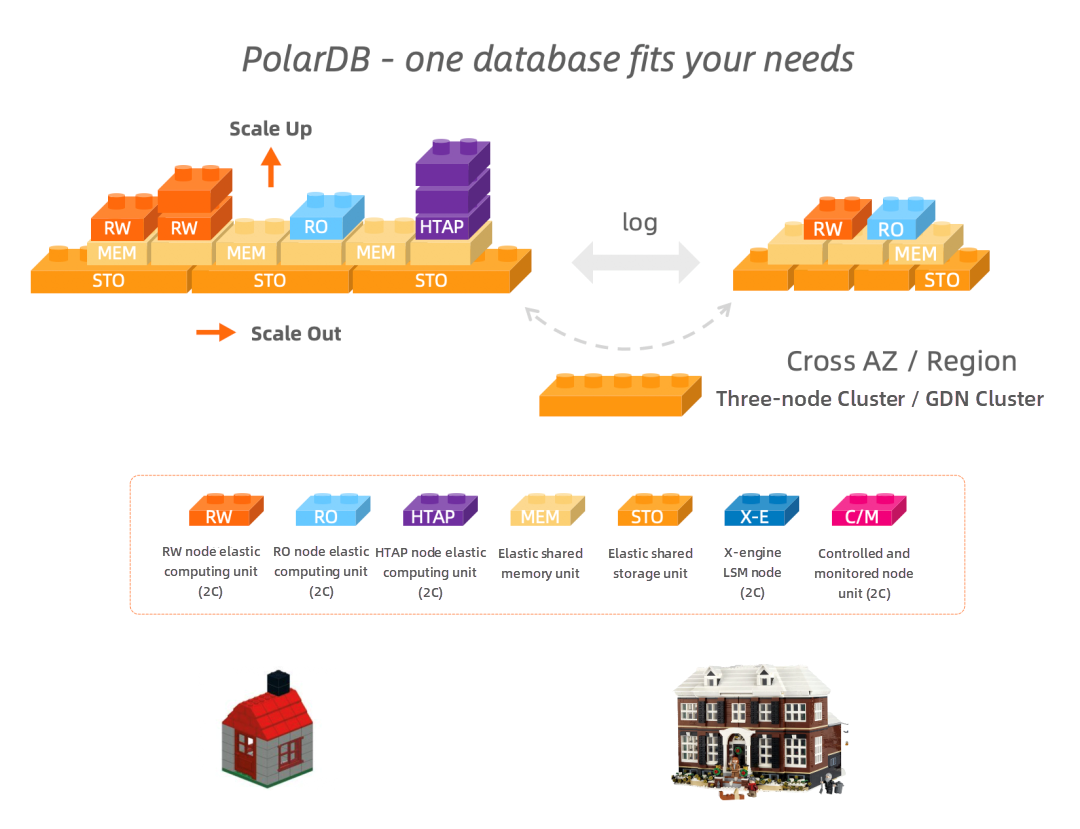
The differences between the features of each version have always been what users need to know. Here is a summary. The yellow-marked background color shows the unique features of version 8.0.2. For more information, please refer to What's New in PolarDB 8.0.2 Server. [1]
The following are the feature statistics of each version as of May 1, 2023. For later updates, see the official website.
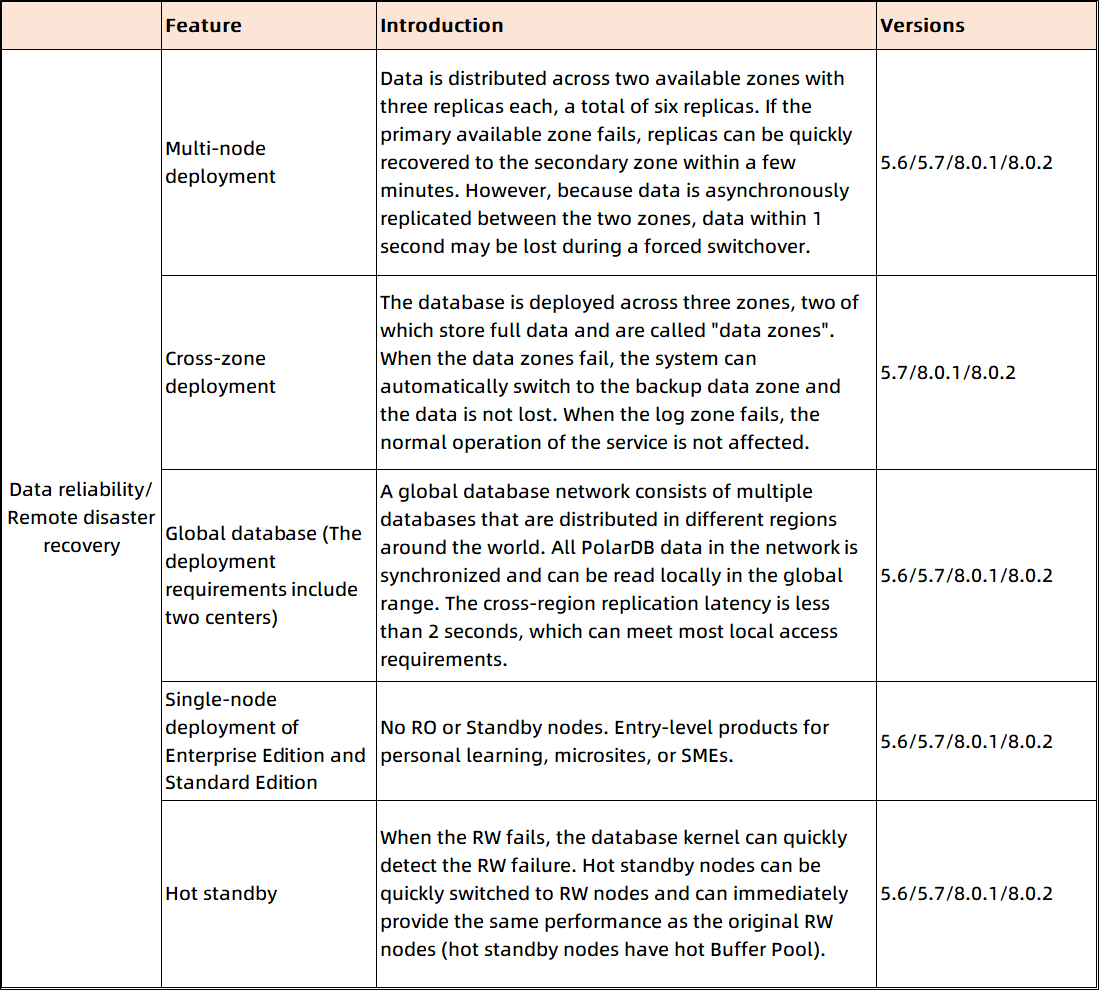
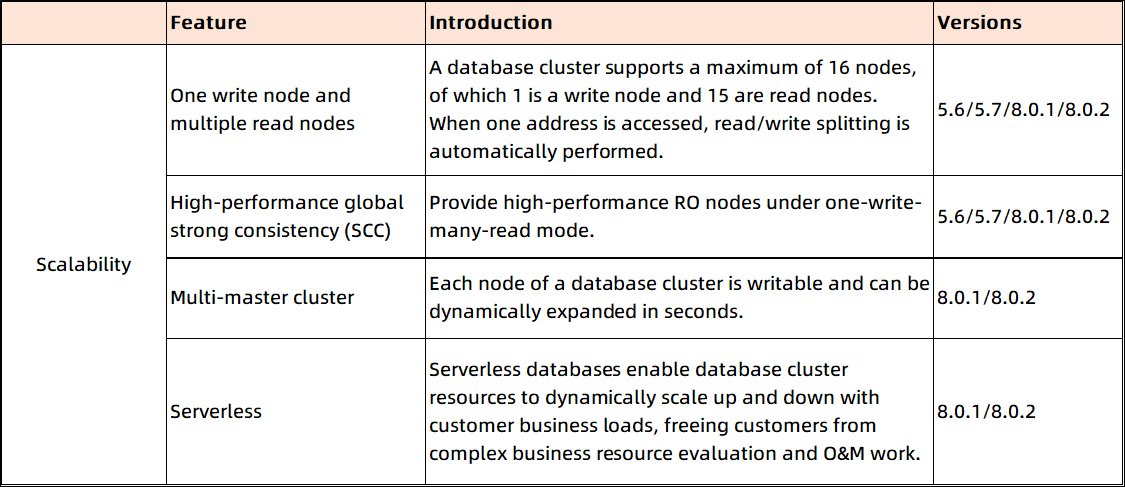
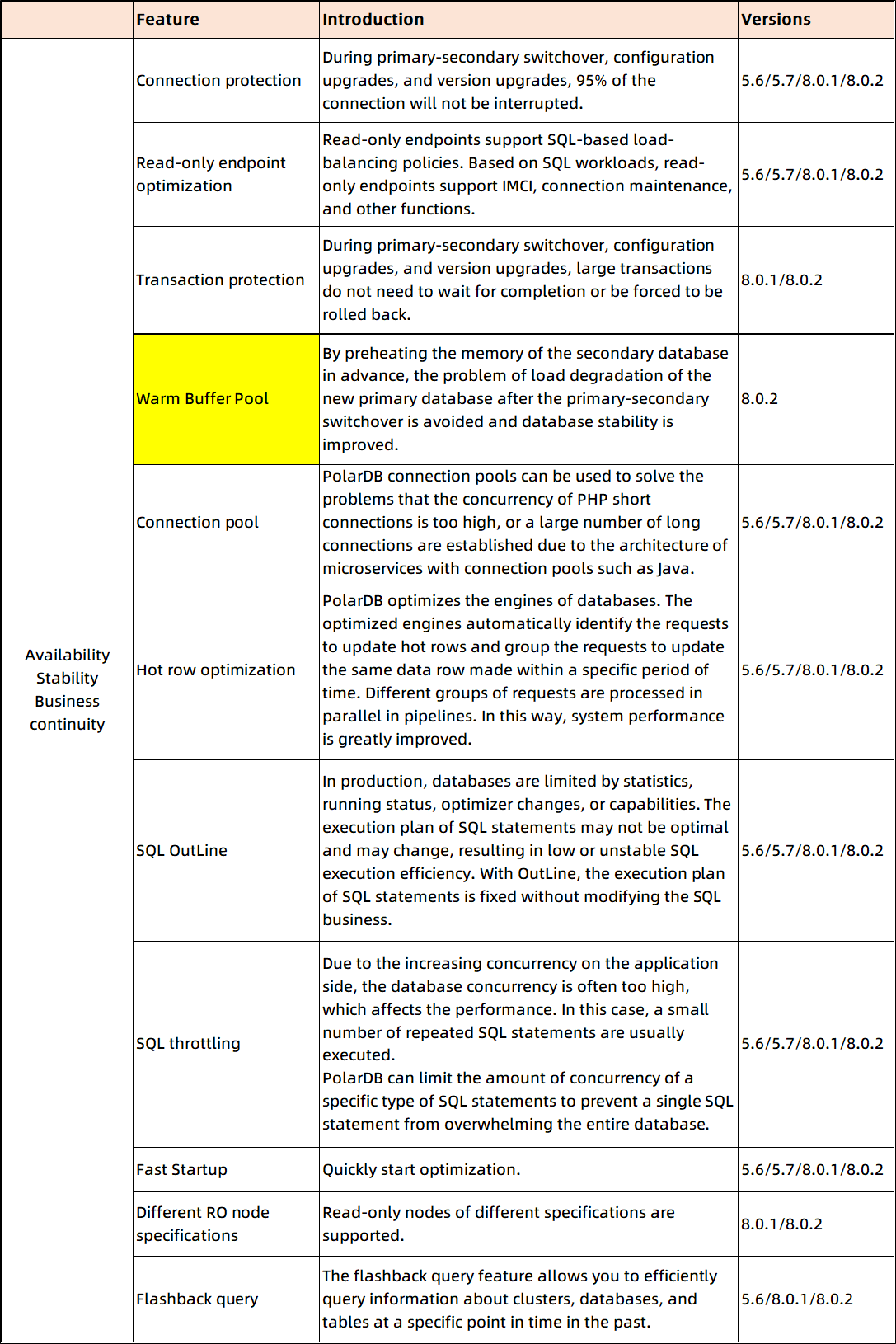
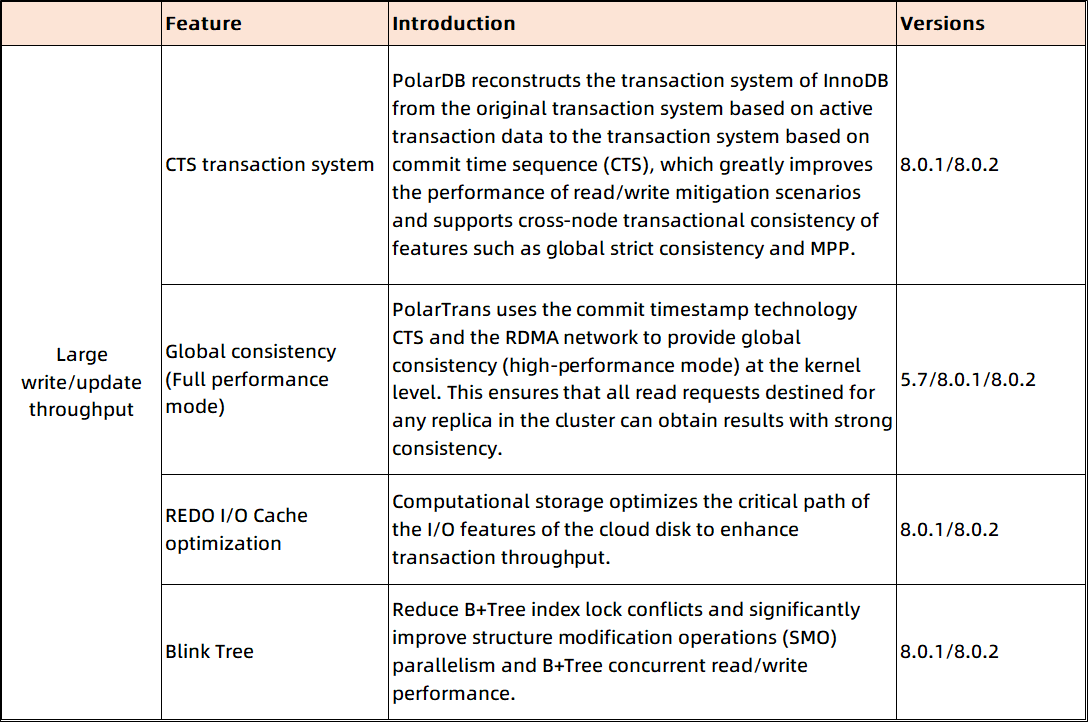
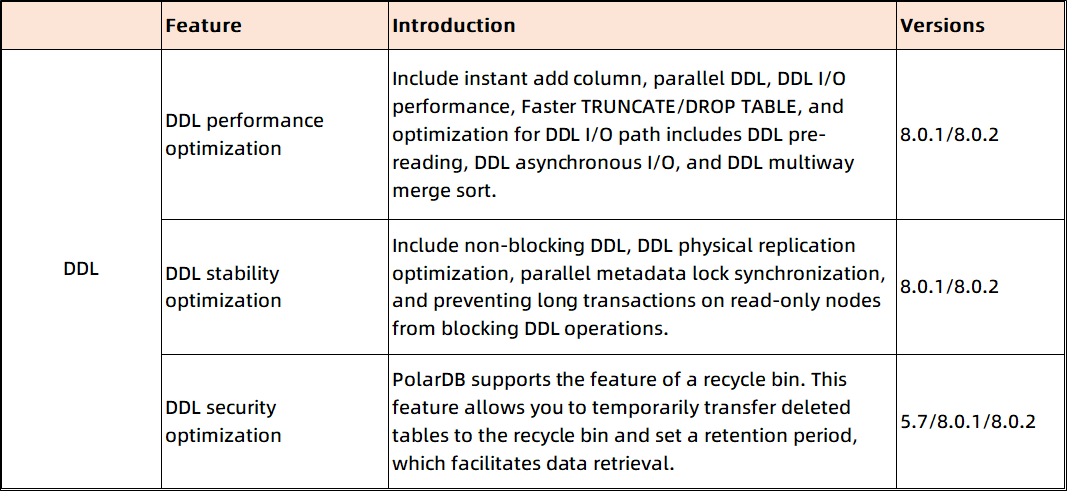
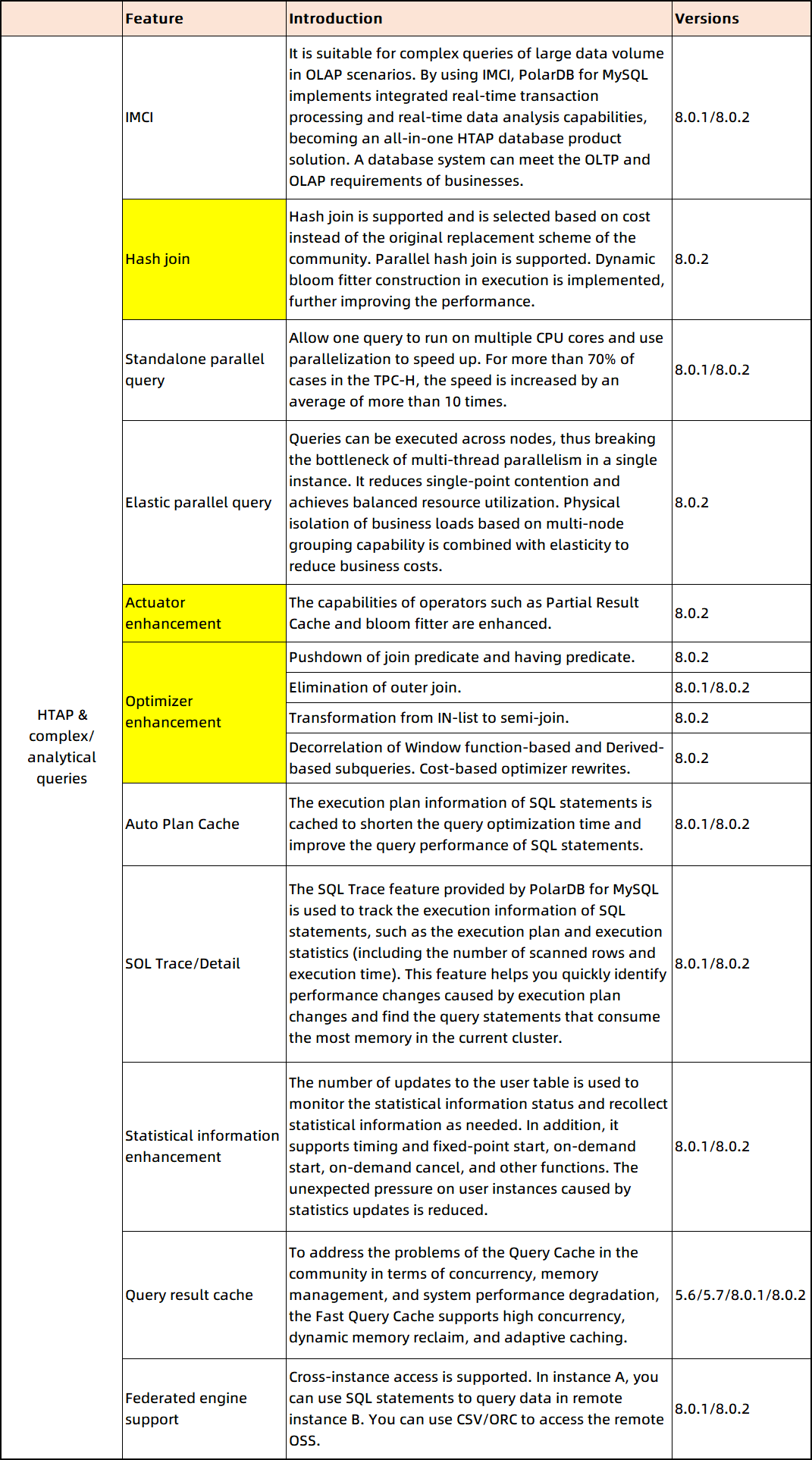
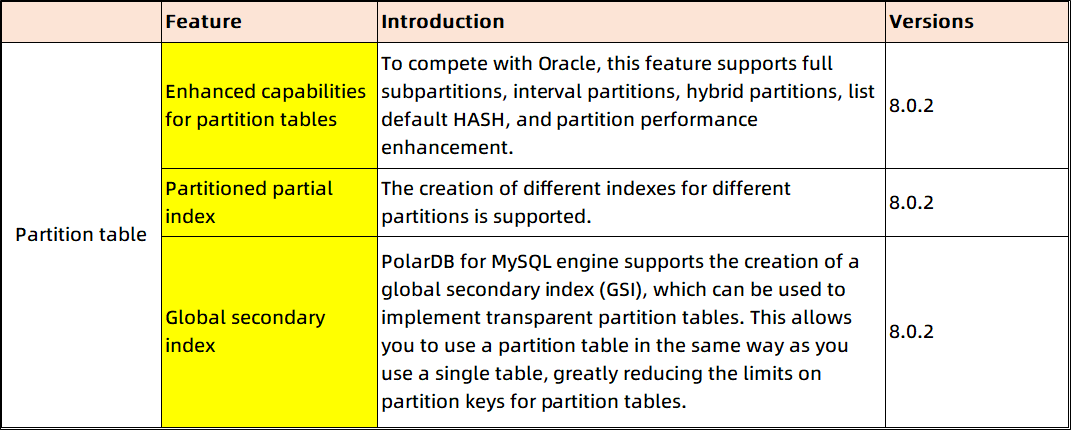
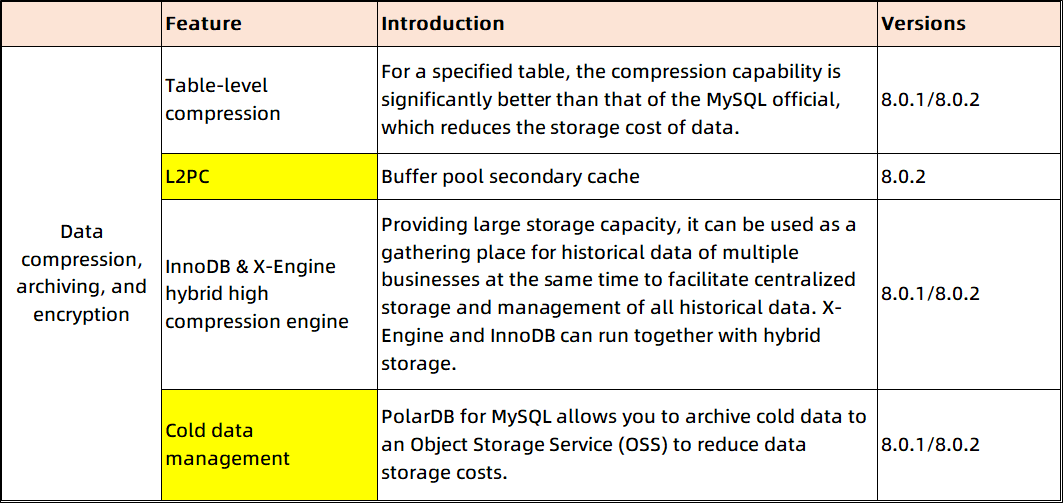
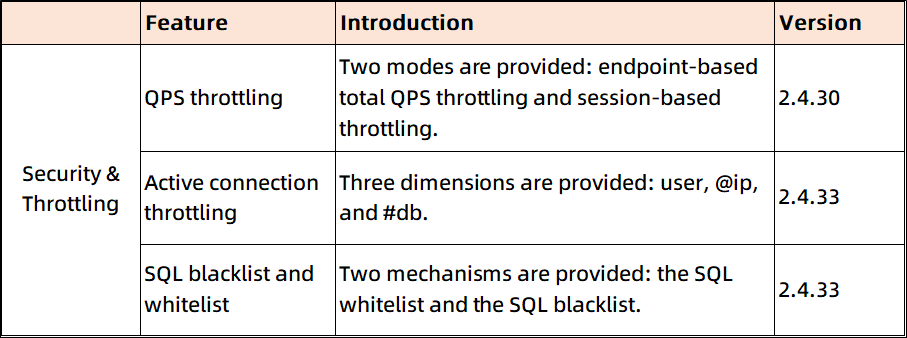
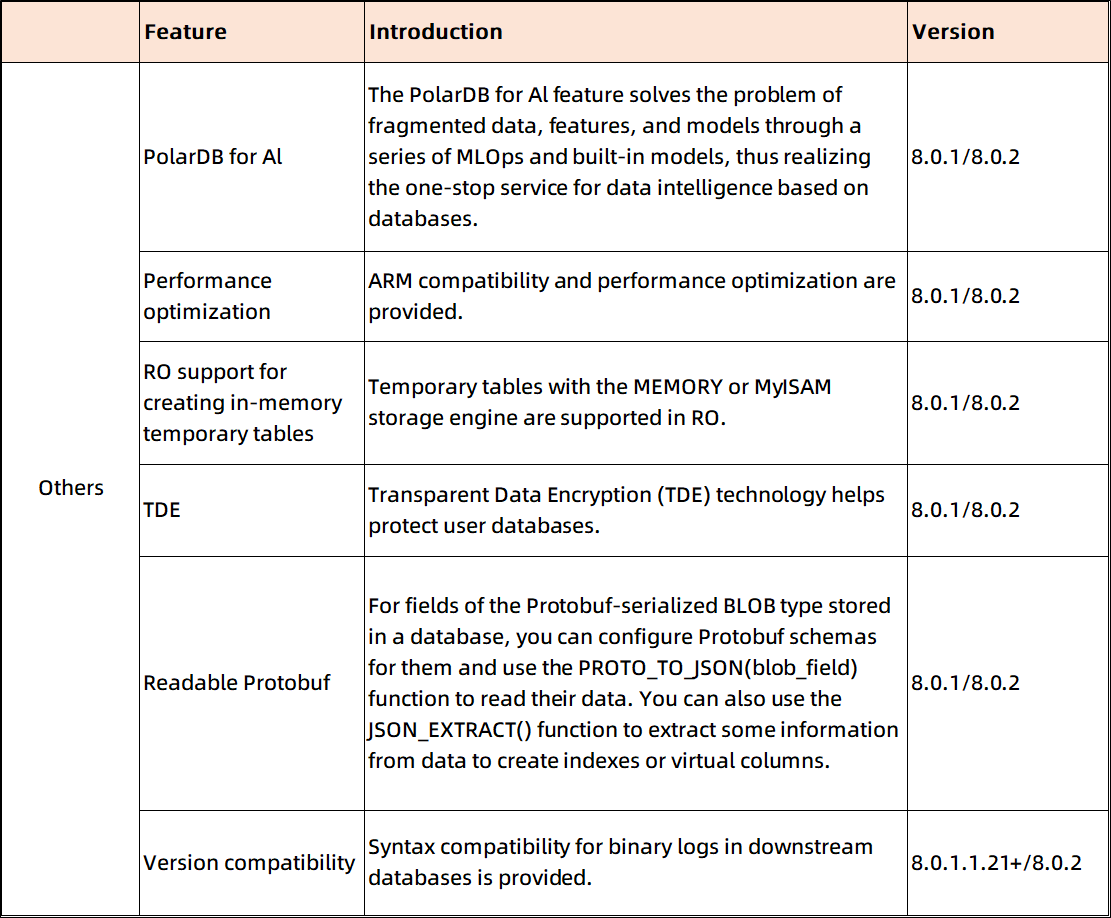
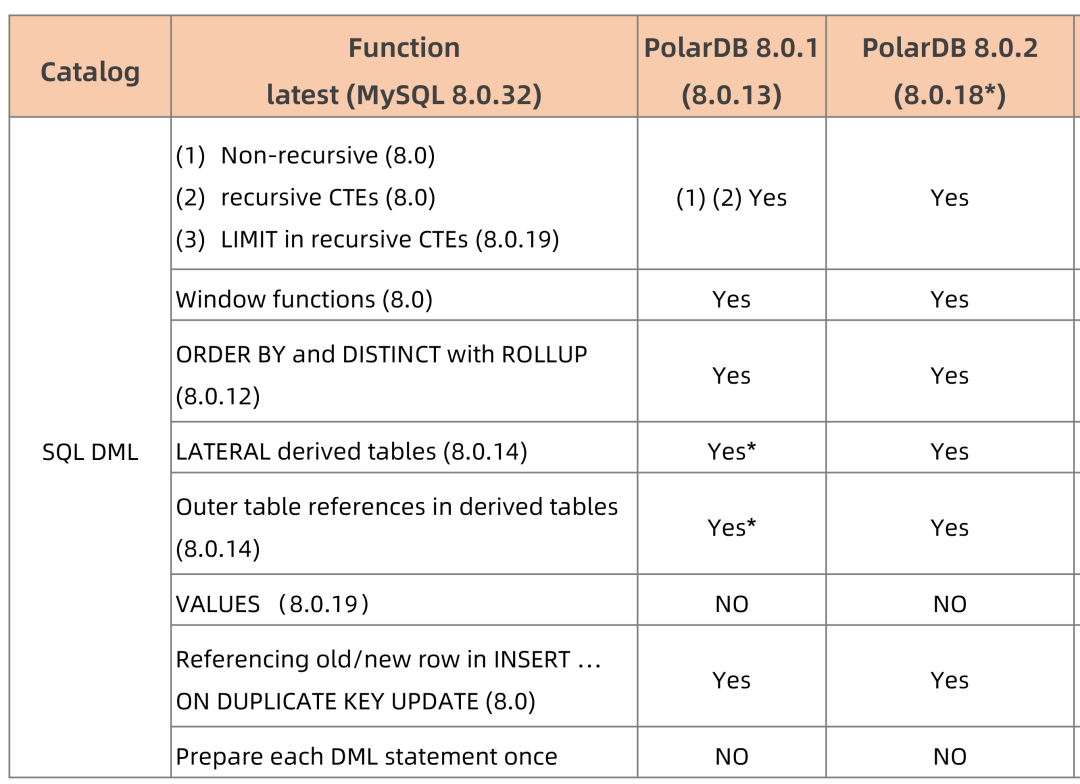
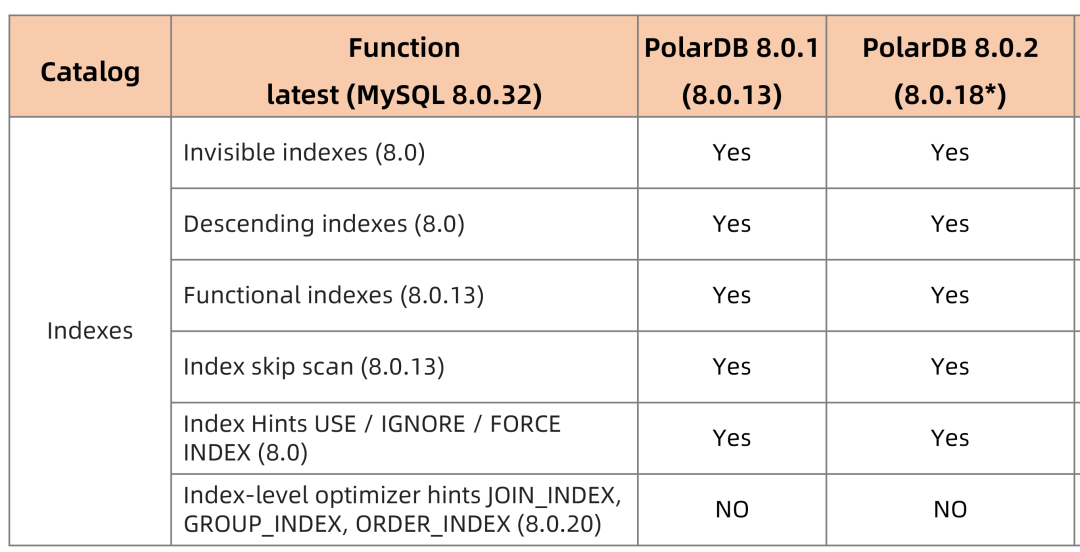
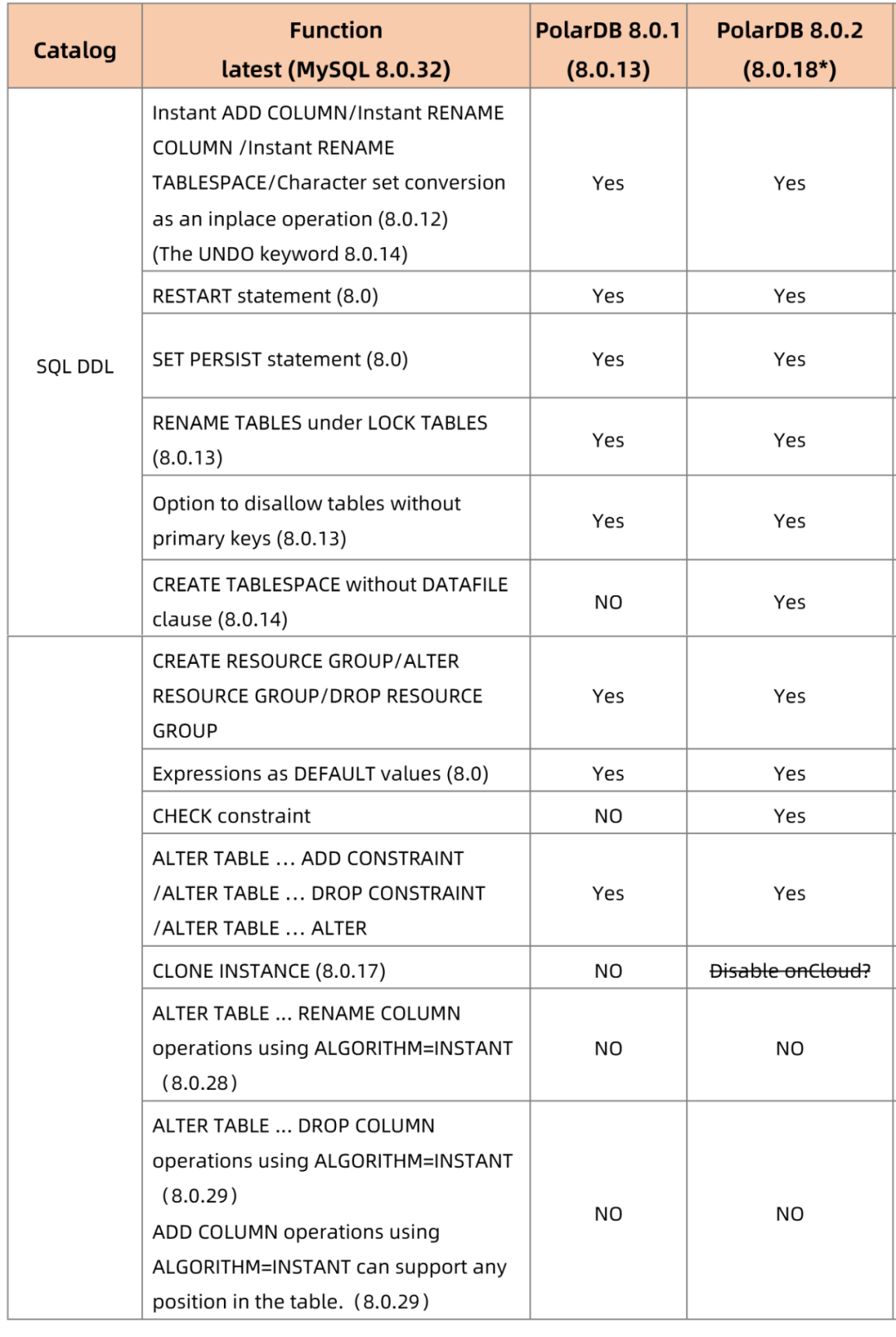
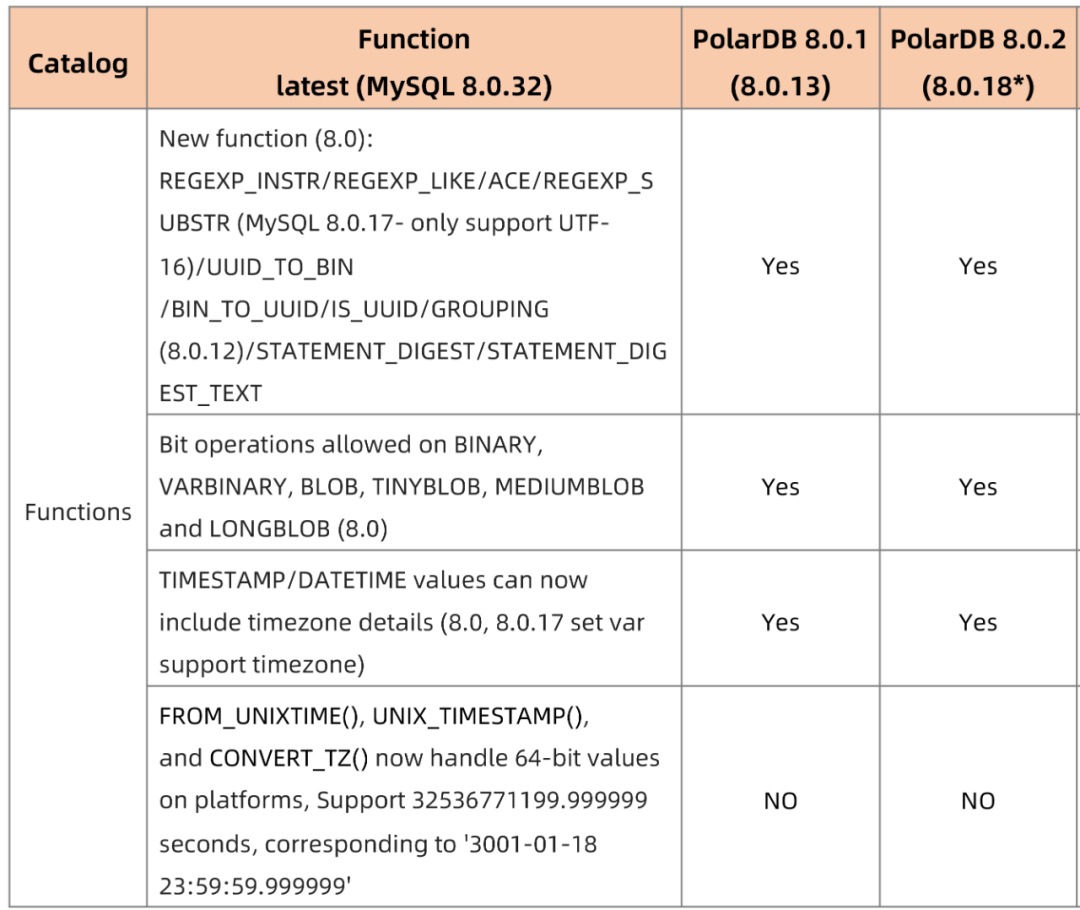
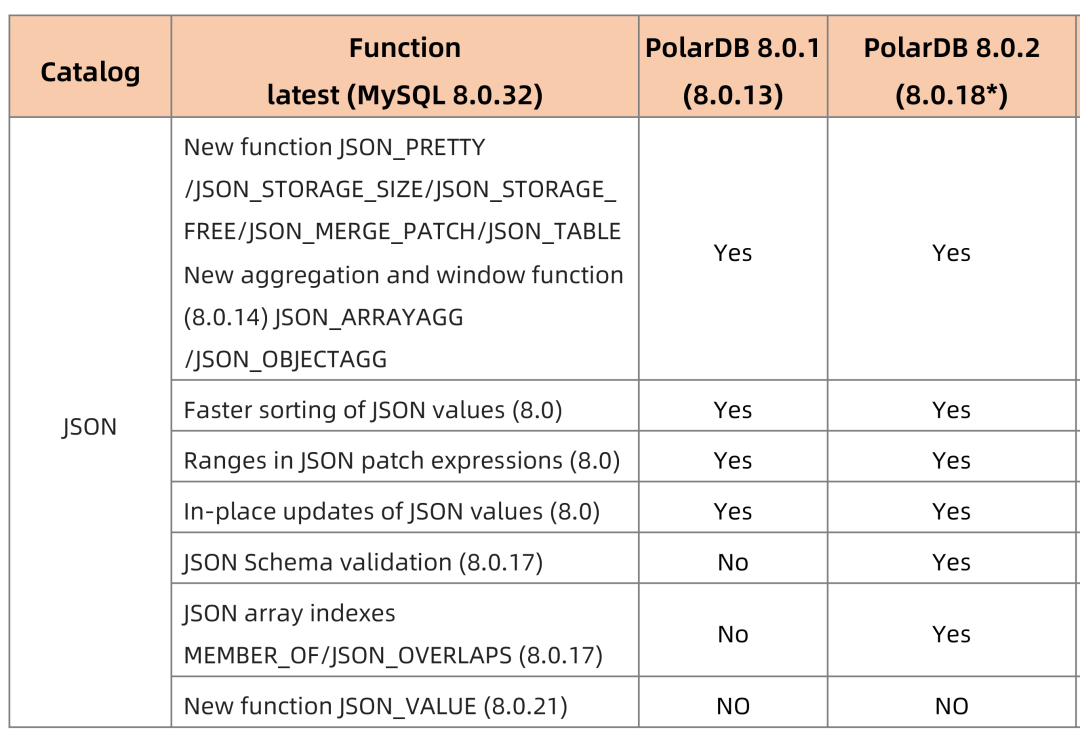
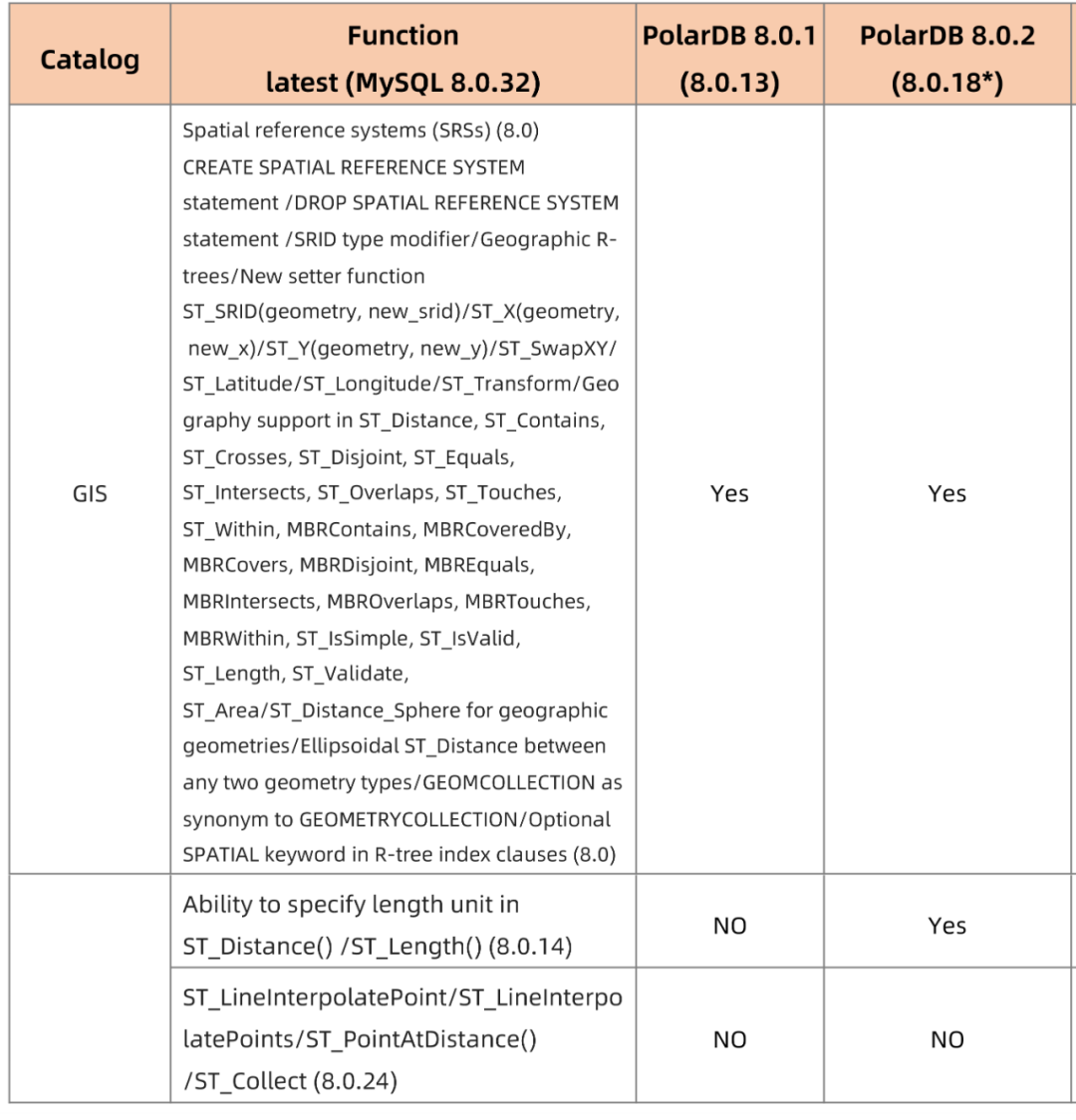
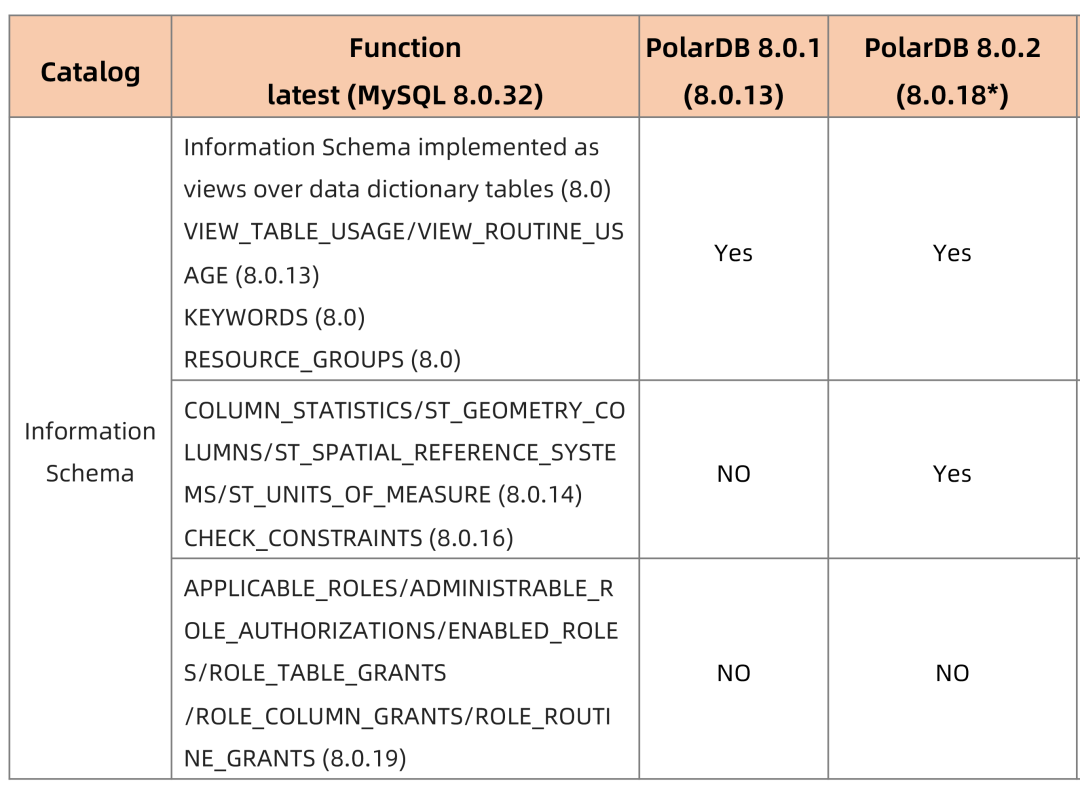
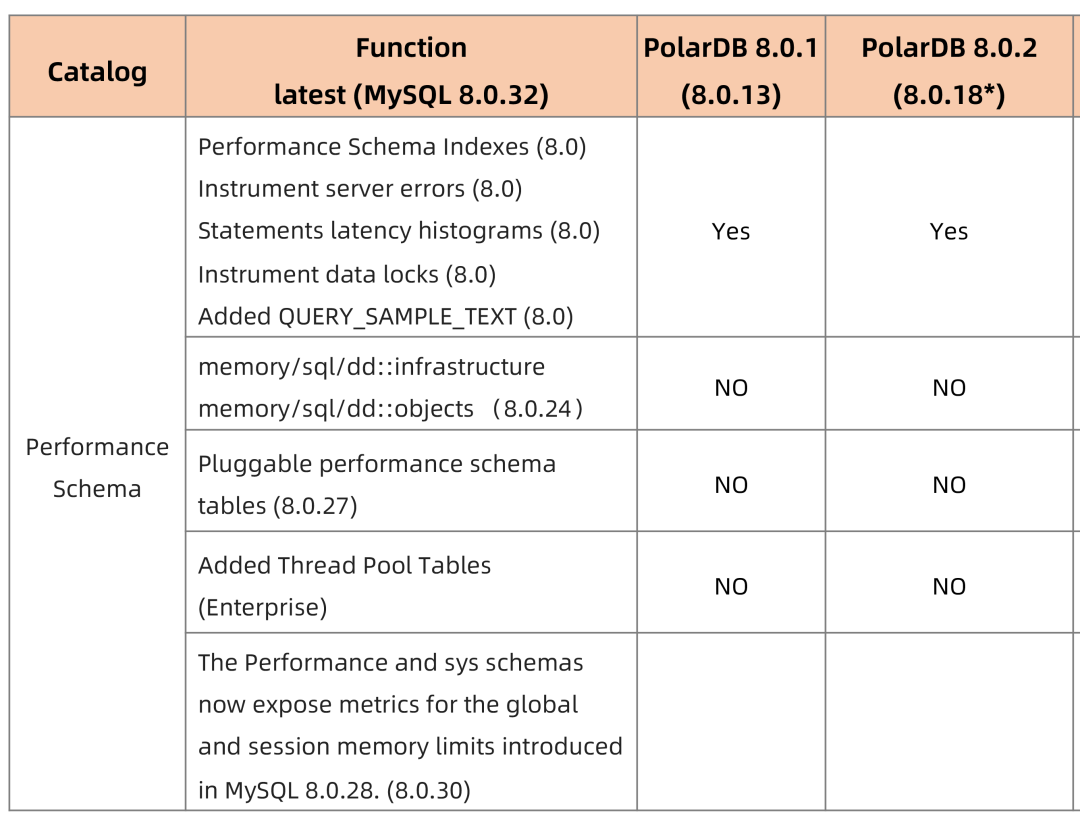

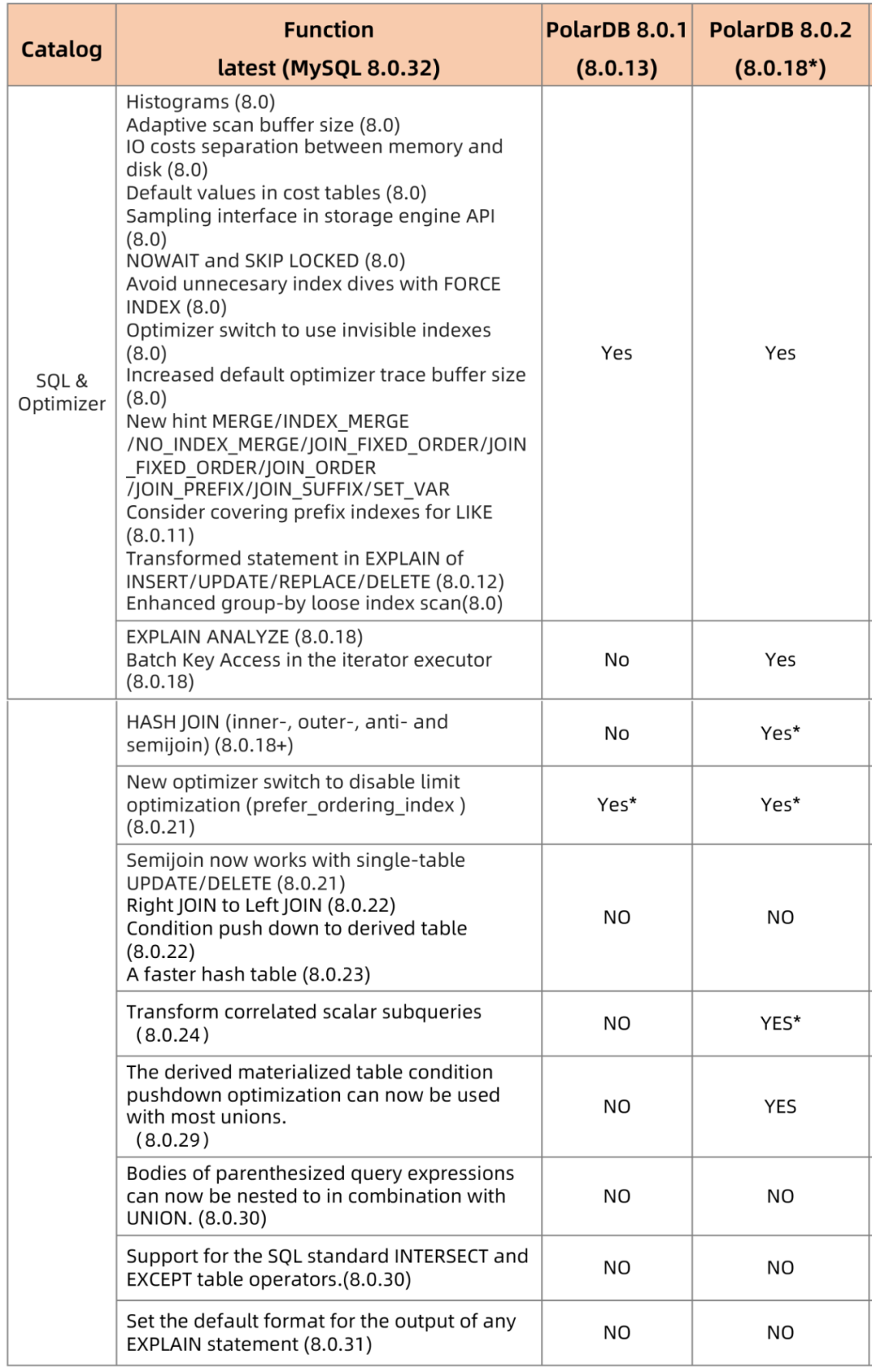
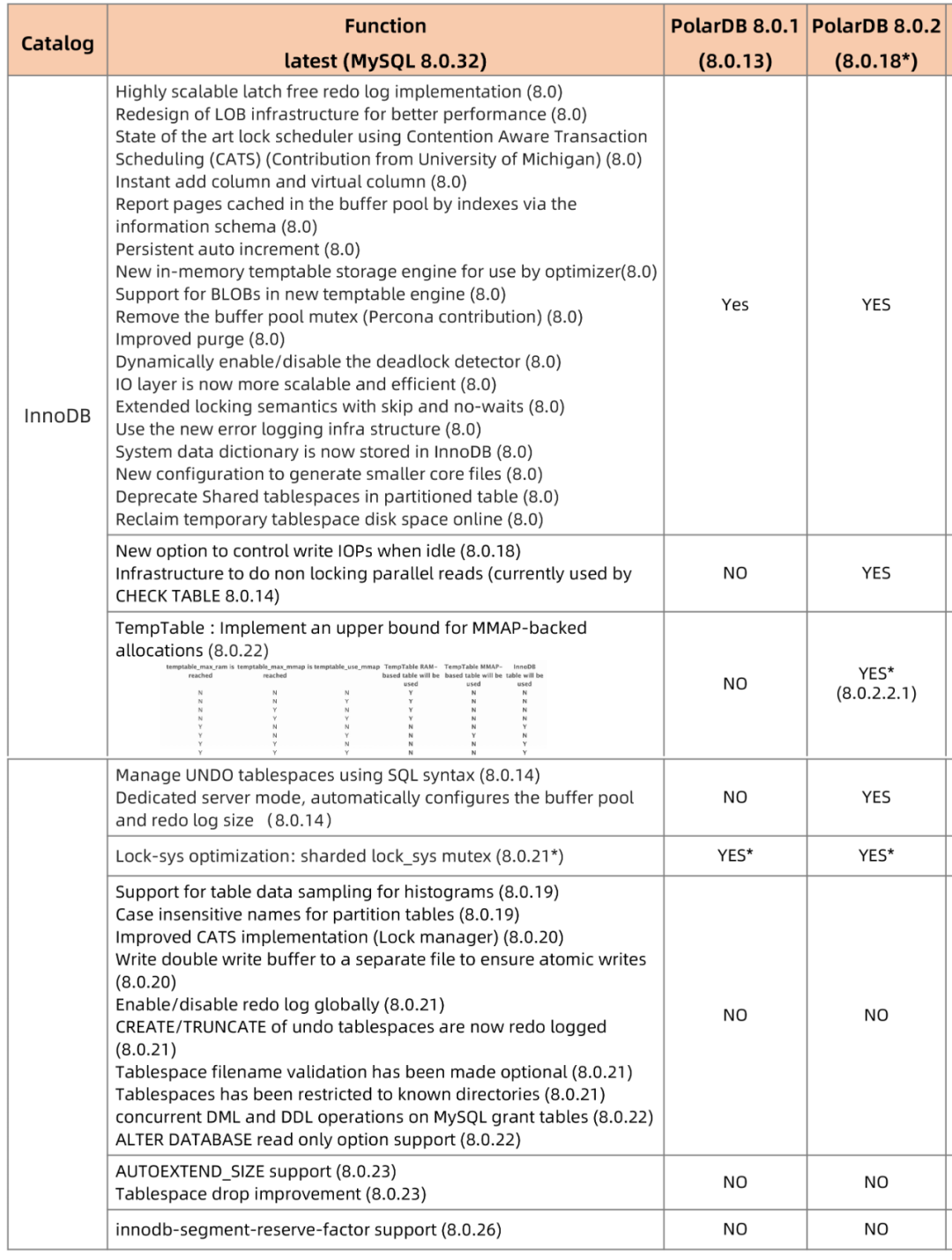
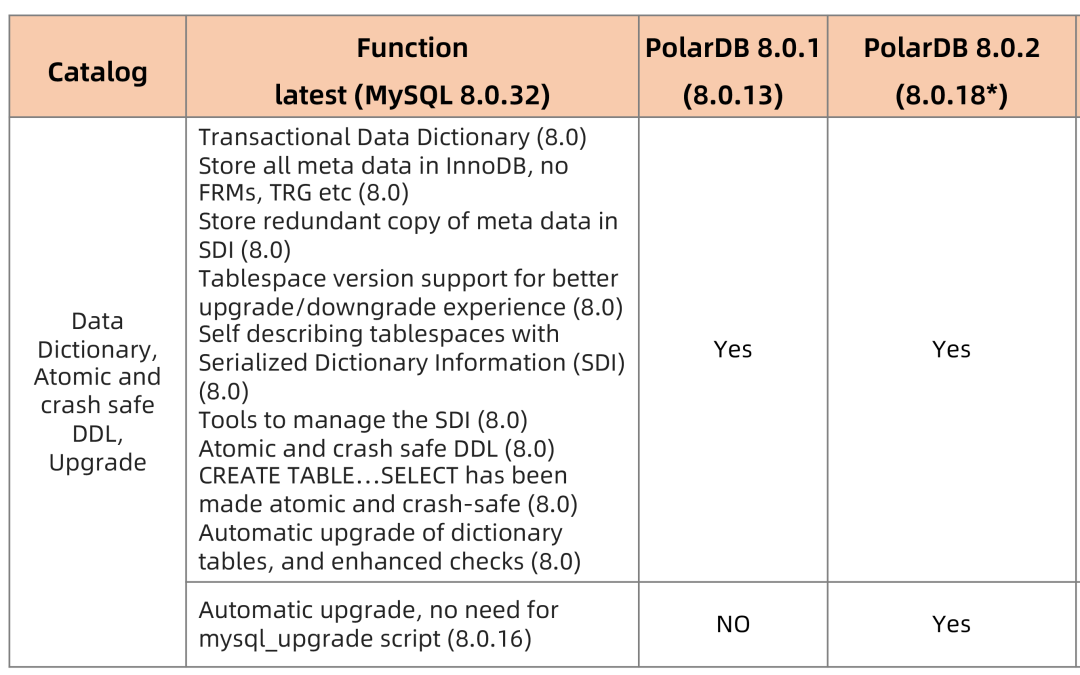
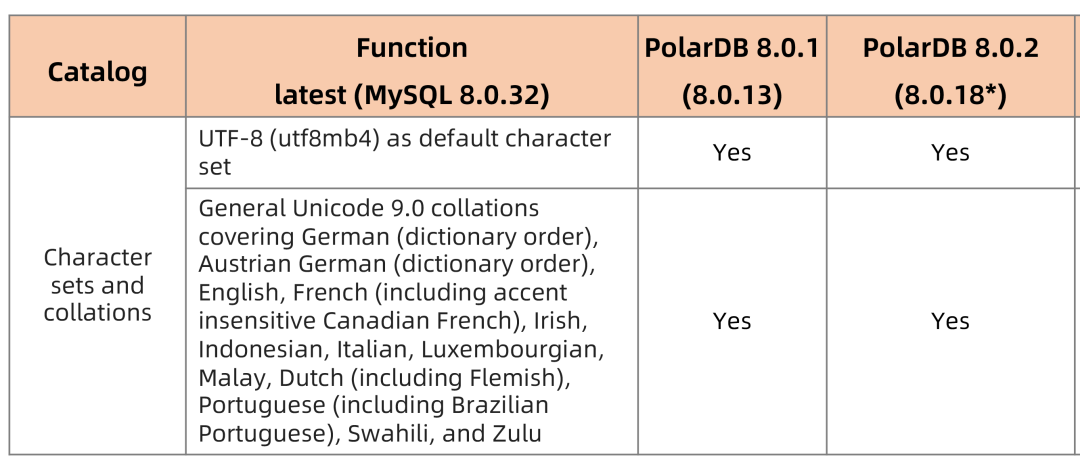
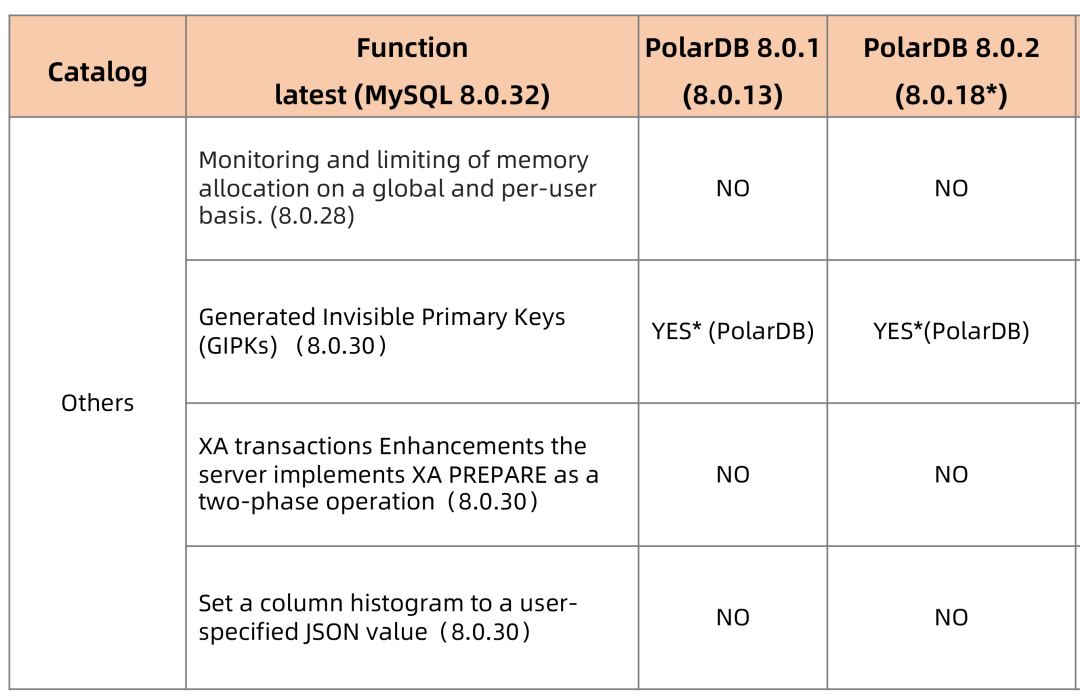
PolarDB for MySQL 8.0.2 Innovation version was initially released on July 22, 2020, and made available for sale on February 1, 2023. After more than two years of iterations across 18 versions, its stability has significantly improved. Why do we need to continue evolving towards version 8.0.2?
First and foremost, any product must strike a balance between customer requirements, technical architecture evolution, and stability. This holds true for official MySQL as well. The official End of Life timeline for each version is as follows:
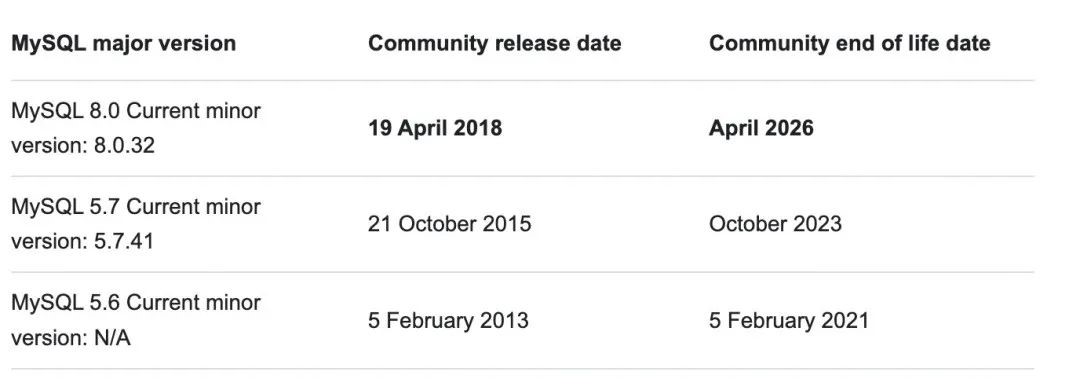
Upgrading major versions requires great determination from users, and compromises, especially in terms of compatibility, need to be made. This is also a historical burden for MySQL. In its early days, MySQL prioritized ease of use over compatibility and technologically sustainable architecture evolution. Consequently, PolarDB for MySQL 8.0 had to undergo significant architectural refactoring and rewriting. However, this also laid an essential foundation for the development of future MySQL versions.
In order to better support customers' reliance on existing versions, PolarDB for MySQL continues to provide comprehensive support for MySQL 5.6, 5.7, and 8.0, while keeping pace with the future technical advancements of MySQL Community Edition. PolarDB for MySQL 8.0.1 is based on the official MySQL 8.0.13 version, and subsequent official versions like 8.0.16, 8.0.22, 8.0.23, and others have introduced significant changes. To ensure better compatibility with future official capabilities, PolarDB for MySQL 8.0 introduces MySQL 8.0.2 based on MySQL 8.0.18. It also backports many features from subsequent versions.
Although the version number may seem lengthy, this is because we previously focused on compatibility with specific major versions. However, with the rapid iteration of official PolarDB for MySQL 8.0, we have also introduced more fine-grained iterations of the medium version to accommodate changes. The version number design of PolarDB for MySQL 8.0 is consistent with that of previous PolarDB for MySQL products. It has been designed to facilitate its own development while considering the official version numbering. For further details, please refer to the New Feature Syntax and Compatibility Improvements in Community Edition of PolarDB for MySQL 8.0.x for details. [2]
/* Accept 'M' 'm' 'm' 'd' 'd' */
1 digit (major), 2 digits (minor), then 2 digits (dot).
32302 -> 3.23.02
50032 -> 5.0.32
50114 -> 5.1.14
80018 -> 8.0.18M represents a major version, mm represents a two-digit feature version change, and dd represents a two-digit bugfix version change. Unlike Aurora MySQL's independent version number design that adds two prefix digits, the version numbers of PolarDB for MySQL are aimed at providing users with clear information about compatibility with official major versions. With the unified version number planning, PolarDB for MySQL products have become a mature series of enterprise-level cloud-native database products.
Before I discuss the version evolution, let's introduce three concepts:
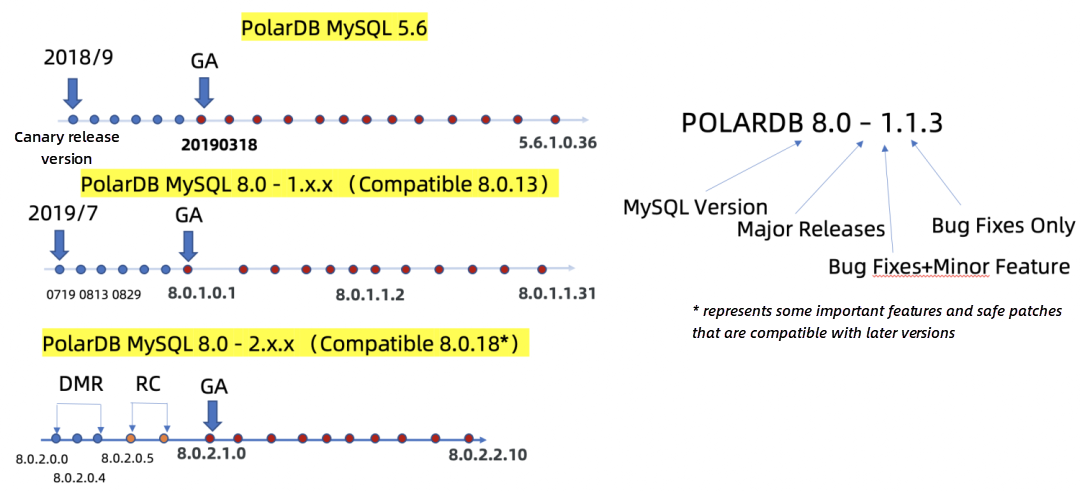
Next is the comparison of the version evolution of other database products.
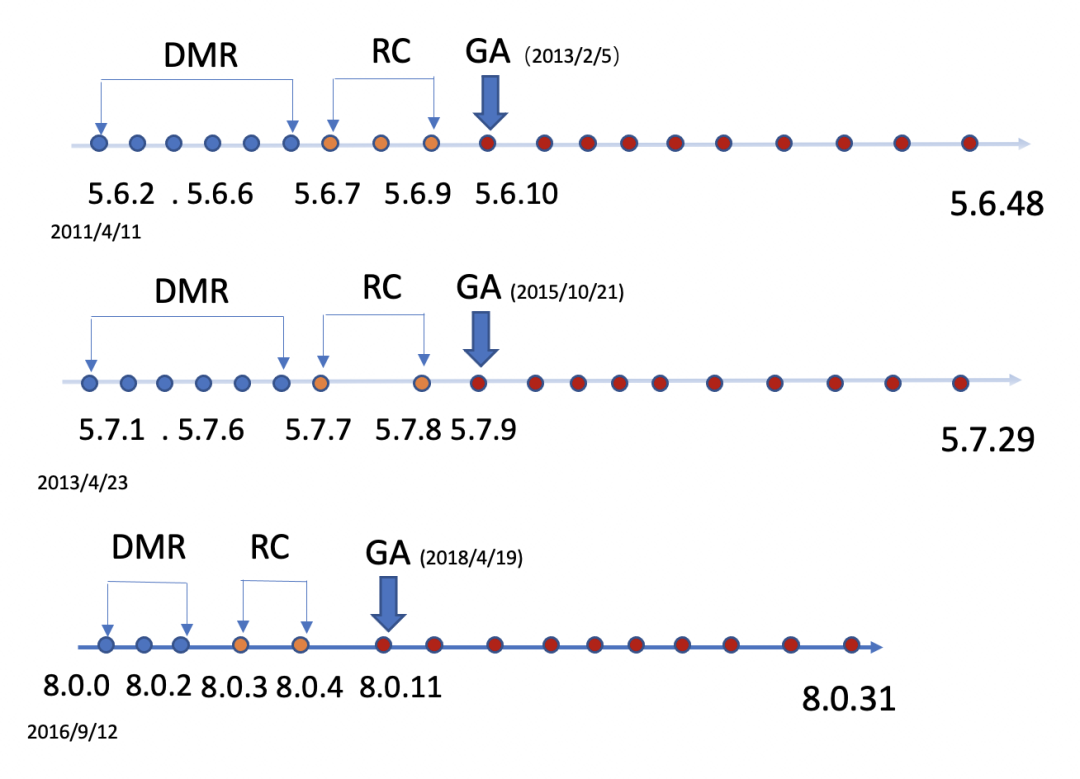
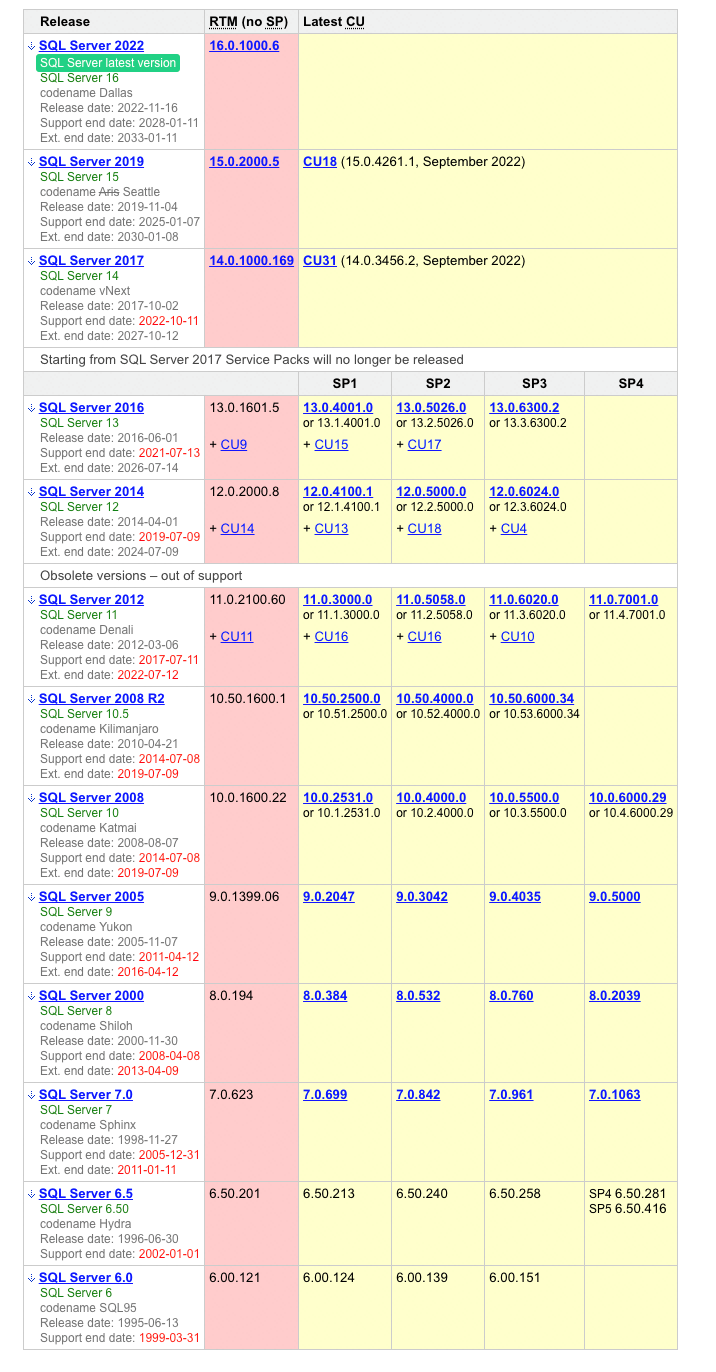
As new R&D capabilities are gradually transferred to PolarDB for MySQL 8.0.2 and later versions, we have also introduced more options for users, including the ability to upgrade from versions 5.6 and 5.7 to version 8.0.x quickly. Additionally, we provide two upgrade modes: in-place upgrade from PolarDB for MySQL 8.0.1 and migration upgrade through DTS to PolarDB for MySQL 8.0.2. Our goal is to ensure that more users can benefit from the new features and advantages in the future.
[1] What's New in PolarDB 8.0.2 Server
[2] New Feature Syntax and Compatibility Improvements in Community Edition of PolarDB for MySQL 8.0.x
How Does PolarDB Optimize Performance in the AUTO_INC Scenario
The Principle of the Elasticity Technology of the Cloud-native Data Warehouse AnalyticDB
ApsaraDB - October 26, 2023
ApsaraDB - October 30, 2023
Alibaba Clouder - April 10, 2018
Alibaba Clouder - February 3, 2021
ApsaraDB - January 4, 2024
ApsaraDB - October 29, 2025
 PolarDB for MySQL
PolarDB for MySQL
Alibaba Cloud PolarDB for MySQL is a cloud-native relational database service 100% compatible with MySQL.
Learn More PolarDB for PostgreSQL
PolarDB for PostgreSQL
Alibaba Cloud PolarDB for PostgreSQL is an in-house relational database service 100% compatible with PostgreSQL and highly compatible with the Oracle syntax.
Learn More PolarDB for Xscale
PolarDB for Xscale
Alibaba Cloud PolarDB for Xscale (PolarDB-X) is a cloud-native high-performance distributed database service independently developed by Alibaba Cloud.
Learn More AnalyticDB for MySQL
AnalyticDB for MySQL
AnalyticDB for MySQL is a real-time data warehousing service that can process petabytes of data with high concurrency and low latency.
Learn MoreMore Posts by ApsaraDB